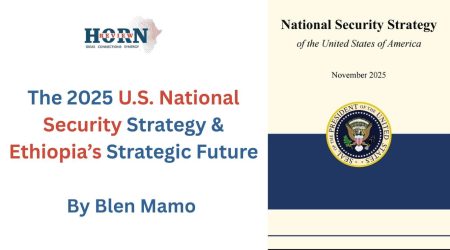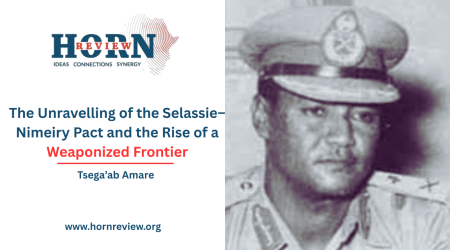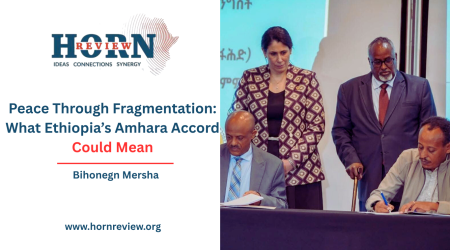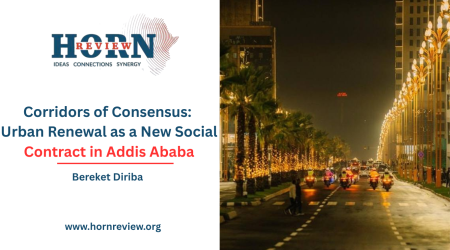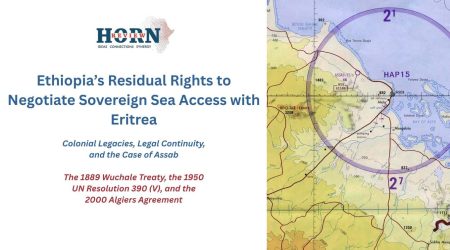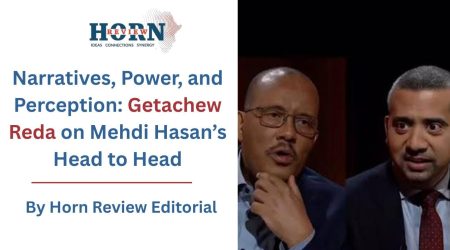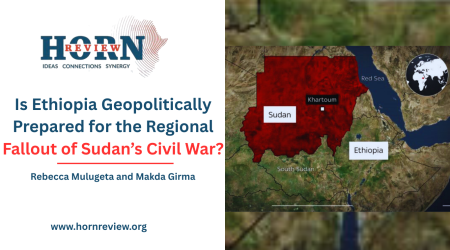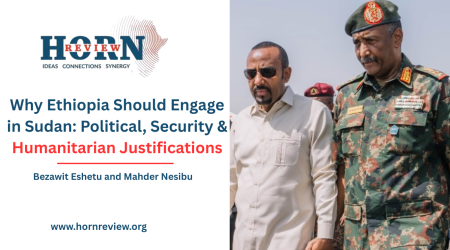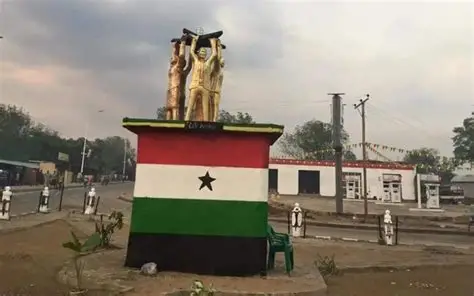
28
Jul
Gambella Region: Ethnic Dynamics and the Challenge in Cross-Border Security
Gambella is a sparsely populated, resource rich region in Western Ethiopia, located along the Akobo and Baro rivers near the border with South Sudan. It is predominantly inhabited by two Nilotic ethnic groups: the cattle-herding Nuer, who constitute the larger population, and the Anywaa, agro-pastoralists engaged in settled cultivation. The enduring conflict between these two communities transcends competition over resources; it is rooted in fundamentally divergent conceptions of territoriality. For the Anywaa, the notion of Kew, the ancestral land defined and bounded, is the cornerstone of their cultural identity and collective worldview (Feyissa, 2011). By contrast, the Nuer conceptualize their world through Cieng, a socially elastic kinship structure that legitimizes territorial expansion and mobility (Feyissa, 2005).
Consequently, the Anywaa perceive Nuer settlement not merely as an encroachment but as an existential threat to their sociopolitical order.
Historical dynamics have exacerbated these tensions. Colonial interventions, particularly the Anglo-Ethiopian Treaty of 1902, arbitrarily divided the two groups, placing most Nuer in Sudan and most Anywaa in Ethiopia. During the early twentieth century, the Ethiopian administration occasionally curtailed Nuer expansion by arming the Anywaa. Following the fall of the Derg, Ethiopia’s post-1991 ethnic federalist constitution granted Gambella the status of an ethnically defined regional state, institutionalizing politics along ethnic lines. The Gambella People’s Liberation Movement (GPLM), dominated by the Anywaa, initially assumed regional authority.
Its political discourse cast Gambella as the historic homeland of the Anywaa and portrayed both non-Anywaa settlers and Nuer “encroachment” as existential threats. At its inception, the GPLM vowed to “liberate Gambela from domination by Highlanders” and branded the Nuer as “foreigners,” citing the 1902 boundary that had relegated most Nuer to Sudanese territory (Johnson, 1986; Feyissa, 2010). In reality, however, Gambella was already ethnically heterogeneous. According to Ethiopia’s 1994 census, the Nuer comprised approximately 40% of the population, the Anywaa 27%, and highlander settlers (Amhara, Oromo, and others) around 25%. Anywaa leaders contested these figures, claiming that remote farming communities had been significantly undercounted (Feyissa, 2011).
In the late 1990s, the EPRDF sought to recalibrate regional power dynamics. In 1998, it compelled the predominantly Anywaa GPLM to merge with the Nuer-led Gambella People’s Democratic Unity Party, creating the “Gambella People’s Democratic Front.” Yet the EPRDF’s strategy extended beyond a simple party merger. It deliberately manipulated the balance of power through selective policing and administrative controls, determining who could access local authority, police recruitment, and secure settlement. Although no systematic arming of militias comparable to other regions (such as Somalia or Benishangul) occurred, the federal government tacitly permitted allied local actors to arm themselves, thereby shifting the local balance of power (Feyissa, 2010; 2011).
The administration occasionally turned a blind eye to arms trafficking and the formation of informal militias when such actions countered rival factions. Strategic deployment of federal forces often favored one group over another, deepening inter-ethnic animosities. By the early 2000s, the Anywaa feared their declining demographic dominance. Human Rights Watch reported that long-standing patterns of Nuer settlement, combined with refugee influxes, had rendered the Anywaa a minority in a region where they had once “greatly outnumbered” their rivals (Human Rights Watch, 2003).
Since the late 1980s, and particularly following South Sudan’s 2013 civil war, Gambella has become a major refuge for displaced South Sudanese. The overwhelming majority of these refugees are Nuer and other Nilotic groups from northern South Sudan. In recent years, seven refugee camps in Gambella have hosted nearly 400,000 South Sudanese, making it one of Africa’s largest refugee concentrations. Ethiopian records indicate that “almost more than 98 percent” of these refugees are Nuer (Nuwer). Their migration has been driven by conflict and flooding in South Sudan’s Upper Nile State, as well as Ethiopia’s relatively liberal refugee policies, which provide freedom of movement, work rights, and pathways to integration. Many Nuer refugees have permanently settled in Gambella and acquired Ethiopian identity documents. Analysts observe that Ethiopia has effectively allowed South Sudanese Nuer “to live as de facto citizens” and “renegotiate their marginality” through alternative forms of citizenship. This fluidity is partly cultural; many Nuer view the Ethiopia–South Sudan border as a “permeable” frontier, enabling opportunistic shifts in national affiliation in response to changing political and economic conditions.
The demographic consequences of this influx have been profound. By the 2007 census—shortly after South Sudan’s independence—the Nuer accounted for 46% of Gambella’s population (around 143,000 people), making them the region’s largest group, while the Anywaa comprised 26%. Analysts attribute this Nuer majority to continued refugee arrivals throughout the 2010s. Politically, this demographic shift has disrupted established power-sharing arrangements. Although Gambella’s state charter reserves political representation for “indigenous” groups, the rapidly growing Nuer electorate—many of whom now participate in regional elections—poses a challenge to political coalitions formed under earlier demographic assumptions. Some analysts caution that this demographic transformation could embolden secessionist tendencies among Nuer communities straddling both sides of the border.
Security conditions in Gambella have correspondingly deteriorated. Inter-ethnic violence between the Nuer and Anywaa has intensified, exacerbated by cross-border armed interventions. The South Sudanese White Army, composed largely of Nuer youth, has occasionally crossed into Gambella to assist their Ethiopian kin, escalating conflicts. Recent fieldwork confirms that “the direct involvement of South Sudanese Nuer White Army militia in support of their Ethiopian Nuer kinsfolk” has rendered contemporary clashes more destructive than in previous decades. Compounding this instability, Ethiopia’s recent security restructuring has undermined border defenses. The April 2023 dissolution of the Gambella Regional Special Forces created a security vacuum along the porous frontier. Combined with the transnational mobility of Nuer militias, this vacuum raises the risk of Gambella serving as a rear base for renewed hostilities against South Sudan’s Dinka-led government. The same ethnic dynamics that have fueled South Sudan’s civil wars now threaten to engulf Gambella.
Ethiopian policymakers must therefore adopt a comprehensive strategy attuned to the region’s complex realities. Given that the current power-sharing framework no longer reflects demographic realities, renegotiating the political compact is imperative. A new, formally negotiated arrangement should provide constitutional guarantees that protect minority rights and address the Anywaa’s existential concerns rooted in the concept of Kew. Simultaneously, establishing a clear legal pathway for long-term refugees to achieve local integration or citizenship would transform them into accountable stakeholders, reducing their marginalization and potential for destabilization. Ethiopia must also overhaul its border security strategy by creating a professional, federally recognized border force tasked with controlling illicit arms flows and cross-border militant activity while upholding humanitarian obligations. These political and security measures require a robust economic foundation, including targeted investments in agriculture, livestock, and vocational training to address the structural economic drivers of conflict.
In the longer term, Ethiopia should also strategically leverage its changing demographics to reinforce its regional influence. By constructively engaging the increasingly significant Nuer population—many of whom sustain deep social and familial networks across the border—Addis Ababa can cultivate stronger cross-border economic and cultural linkages with South Sudan’s Nuer communities. Framed as a policy of cooperative development and shared security interests, such an approach would allow Ethiopia to play a more active role in stabilizing the borderlands and shaping a diplomatic environment more conducive to its national interests in Ethio–South Sudanese relations.
By Mahder Nesibu and Bezawit Eshetu,Researchers,Horn Review
Further Reading
- Feyissa, Dereje. (2011). “playing Different Games: The Paradox of Anywaa and Nuer identification startegies in the Gambella Regional State, Ethiopia”.
- Feyissa, Dereje. (2010). “The politics of Co-optation in the Gambella Regional State. “in “Ethnic Federalism: The Ethiopian Experience in Comparative Perspective”, edited by David Turton. James Currey
- Feyissa. Dereje. (2005). “Cieng and Kew: The Duality of Nuer and Anywaa Territorial politics in the Gambella Region, Ethiopia. “
- Human Rights Watch. (2003). “Targeting the Anuak: Human Rights Violations and Crimes against Humanity in Ethiopia’s Gambella Region”
- Johnson, Douglas H. (1986). “On the Nilotic Frontier: Imperialism and the Nuer of the Upper Nile, 1898-1928.”
- UNHCR. (2025, June 26). “Infographic: South Sudan Situation- Ethiopia displacement”

